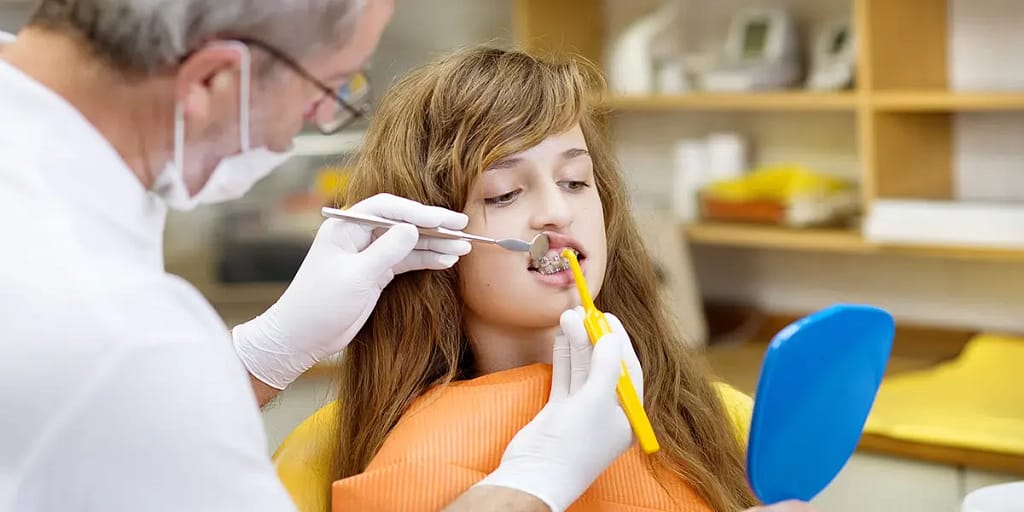Orthodontic Services
Looking for a trustworthy orthodontist who can handle all of your orthodontic treatment needs under one roof is crucial because there are many potential problems in the mouth.
Dr. Kim’s team’s highly qualified orthodontic specialists are excited to look after your smile. Our Highline dental practice in New York offers various orthodontic treatment options for issues like malocclusion, uneven smiles, and more, including Invisalign® braces, dental braces, and other oral appliances.
Services For Orthodontic Treatment
A specialist in orthodontics is an orthodontist. The area of dentistry known as orthodontics is concerned with identifying, positioning, and aligning crooked or misaligned teeth. You can visit an orthodontist rather than a general dentist if you need braces.
Misaligned and crowded teeth An orthodontist’s primary responsibility is to identify and treat oral anomalies and dental malocclusions. The orthodontist sets up the appliances that realign your teeth and jaws to correct the alignment issues.
The common anomalies include crowded teeth and teeth that are out of alignment. Both ceramic and metal braces can be used to treat crowding and misaligned teeth. Over time, these braces put pressure on the teeth. As a result, the teeth line up in the predetermined location, and the bone shape is permanently altered.
Our comprehensive orthodontic services are intended to not only straighten your smile but also to enhance your oral and general health. With a full range of high-quality orthodontic services, including preventative oral cancer screenings, dental braces, and oral appliances, our orthodontic services let patients get the highly personalized dental attention they require.
Explore the details below to learn more about our orthodontic treatment services:

Malocclusions Treatment
Jaw misalignment can result in malocclusions. Your orthodontist has experience treating three different types of malocclusions.
Crossbite refers to malocclusions that are easy to reposition and treat. The jaws are in good condition, but the teeth are not perfectly straight. The teeth are not perfectly aligned, but the jaws are in good condition.
Overbite follows next. Because it is larger, the upper jaw protrudes ahead of the lower jaw.
Underbite occurs when the lower jaw is larger and protrudes in front of the upper jaw.
Your orthodontist determines the type of malocclusion you have to treat it. Then they create your braces or other tools to straighten your teeth and set your jaws in place. Braces and aligners function similarly. The pressure alters the teeth’s position and contour. Additionally, the jaw structure improves.
Depending on your preferences, your orthodontist may offer you Invisalign if you only need minor realignment. Clear Invisalign aligners are the least noticeable. The least noticeable braces available from your orthodontist are Invisalign.
Traditional braces
Lucid braces
Invisalign Clear Aligners
Clear aligners are a set of fitted trays that help straighten teeth (such as Invisalign®). The trays are detachable and snugly fit over your teeth. Patients who want an orthodontic treatment that is less obvious than traditional braces may opt for clear aligners.
Space Maintenance for Missing Baby Teeth
The Lip and Cheek Bumpers
Palate expander
Another appliance your orthodontist may recommend is a palatal expander. The upper jaw’s curve is widened with the aid of palatal expanders. Palatal expanders, as opposed to braces or aligners, work on the mouth’s joints and bones to realign them.
Retainers
Orthodontic Treatment: What To Expect
Follow-up appointments may differ based on the type of braces you select and the circumstances surrounding your child. To ensure that your child’s teeth are developing normally, plan on visiting us every four to eight weeks. Because we can spot problems or make adjustments to stay on track, keeping these appointments is essential to the treatment plan.
Your child’s smile will be attractive and healthy after the procedure. Following treatment, they will need to wear a retainer, but it is removable, and after a while, many kids only need to wear it at night.
Schedule a Consultation
Contact our best orthodontists in Highline dental practice New York. If you believe you require any of the previously mentioned orthodontic services. Please Make an appointment with our orthodontists if you need to be checked out to ensure your teeth are healthy.
FAQ
1. How Does Invisalign Work?
Teeth may be straightened with Invisalign without the need for metal braces. Instead, a system of custom-made, transparent braces called Invisalign covers your teeth and progressively realigns them.
2. Is Invisalign more durable than braces?
While practically invisible and unobtrusive, Invisalign aligners provide effective treatment with trustworthy, long-lasting results. Moreover, Invisalign treatment can occasionally be even more effective than braces due to the strain that the aligners apply on the whole tooth.
3. Who is not eligible for Invisalign treatment?
Those with dental implants, bridges, or TMJ problems might not be the best candidates for Invisalign. Also, if your teeth are particularly little, have odd forms, or have worn enamel, Invisalign may not be able to straighten them.
4. Is Invisalign a good investment?
While some individuals like to focus on the notion of a hidden orthodontic process, others pick Invisalign because they appreciate the idea of removing aligners. Nonetheless, Invisalign customers think that the benefits of their treatment far outweigh any drawbacks.
5. When is Invisalign too late for you?
There is no maximum age limit when using Invisalign. Yet most people looking for Invisalign’s aesthetic and dental health advantages are individuals who are well into their 40s, 50s, and beyond.